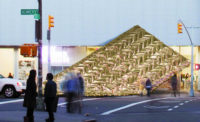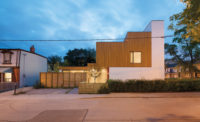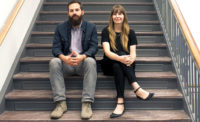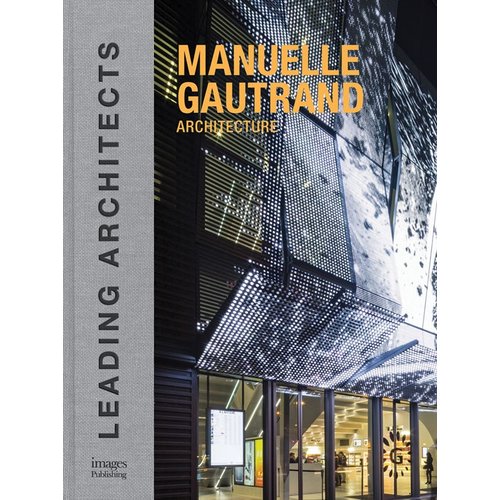Partners in both professional practice and private life, María Langarita and Victor Navarro first met in the booming pre-crisis Madrid of the early 2000s, when anything seemed possible for a pair of young architects. Despite the tough economic times that followed, they have nurtured a spirit of loose, inventive play in a series of small commissions, temporary installations, and renovations. These range from the Red Bull Music Academy, a village of rehearsal spaces encamped in the hall of a former slaughterhouse in Madrid, to a vacation house for the families of three brothers that spills down a terraced hillside in Alicante.
When they first met, the two found a common interest in art. “Artists are the first to give ideas potent images,” Langarita says. “Architecture is less direct, more processed.” Langarita came from a small town in Aragón. She attended Pamplona's school of architecture, then began working in the office of Luis Mansilla and Emilio Tuñón in Madrid. Navarro, the son of the architect and painter Juan Navarro Baldeweg, was finishing his studies at Madrid's ETSAM architecture school. They began looking at contemporary art to find ideas and started their eponymous firm, Langarita-Navarro, in 2007.
For Red Bull, the abstract and figurative paintings of Philip Guston helped inspire the whimsical gathering of house-like rehearsal rooms along a raised walkway. The couple collected other visual references for the project, including pictures of sleds, as they studied different ways to lift the temporary structures off the earthen floor.
Such visual cues serve as instruments in Langarita and Navarro's ongoing “conversation” design process. The two also see a social role for architecture. In the Baladrar house in Alicante, for example, they clustered indoor and outdoor spaces around the main living area so family members can be connected while in different parts of the house.
Similarly, other projects create flexible spaces for working environments, including the Medialab-Prado–a space for tech start-ups in a renovated Madrid sawmill–and their latest and largest project, an open-air meeting hall in Arequipa, Peru. A lightweight canopy covers an area of 50,000 square feet in order to shade users and support equipment for different events. While Red Bull and the Medialab occupy and recondition existing building shells for new uses, in Peru the architects provide the shell as well—though, with its different uses, prefabricated structure, and fabric covering, the canopy remains close in spirit to earlier projects.
The openness to different uses, the focus on social organization, and the relative impermanence of some projects can be considered an extension of the culture of occupied public spaces that has sprung up with the financial crisis in Spain, social protests in which many young architects have participated. Langarita and Navarro's work shares the freshness of these collective experiments, taking their lessons to the next level of deliberated design.


























Post a comment to this article
Report Abusive Comment